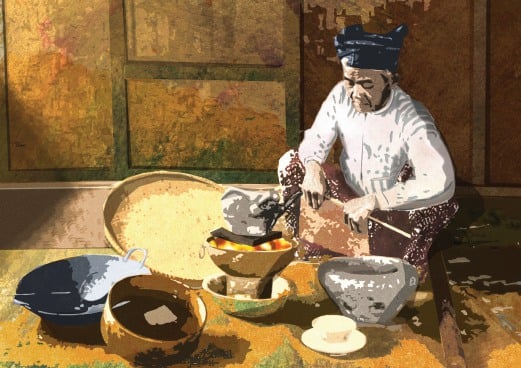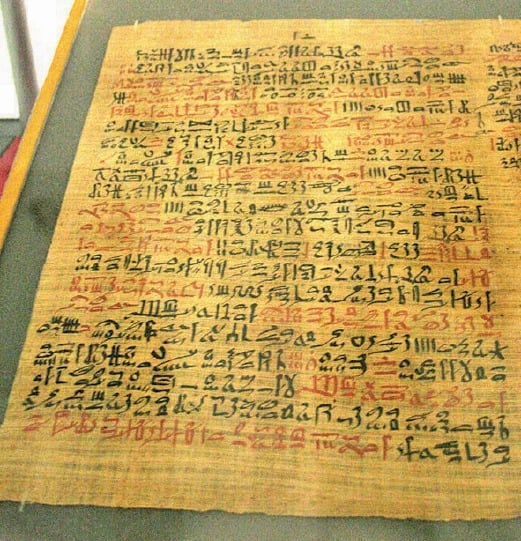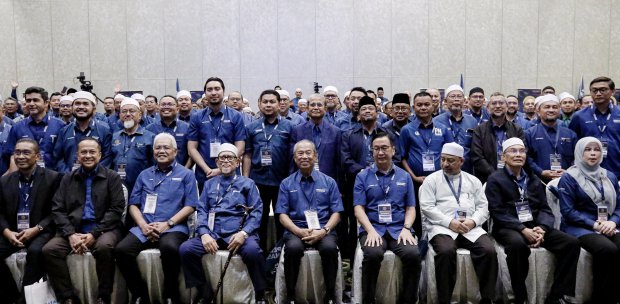The poetic jampi serapah is very much a part of our oral heritage, writes ninotaziz
WORDS are powerful things. This is something we’ve known for a long time. Words have a way of creating, healing and destroying concepts, ideas and relationships. It’s almost magical.
Some of the grandest words, in poetry or prose, form incantations, which conjure visions of ghouls, ghosts and everything in between.
With the dust of Halloween just settling, it’s a great time to explore this topic.
In Asian societies, incantations come in the form of mantras. Throughout ancient times, most civilisations had mantras for dealing with illness, injustice, imbalance, catastrophes and the unknown. The Hindus, Chinese, Egyptians and many others practised good mantras as well as bad curses.
SPOKEN HERITAGE
In the not too distant past, the Malays and many other ethnic groups such as the Kadazan and the Iban for example, relied on jampi serapah for healing purposes in addition to other uses.
It forms a part of our oral tradition. There were incantations for important occasions such as the birth of a baby, the opening of new land or healing the sick.
There are words that can induce fear by naming unspeakable things. My grandmother would warn me of how dangerous it was to go off anywhere alone. “Jangan duduk ceruk ceruk. Nanti kena pelesit,” she’d often say. I thought this was just a ruse but once I heard grandmother use an incantation to get rid of the so-called pelesit, a grasshopper-like jin. She warned me that I was never to repeat it as I hadn’t undergone the proper ceremony to utter them, let alone use them.It was my introduction to jampi serapah.
Interestingly, the ability to conjure these “curses” is considered an ilmu or knowledge. Most common included ilmu pengasih (love charm), and its opposite ilmu pembenci (hatred), as well as ilmu kebal (invincibility) and ilmu pendinding (protection).
Ilmu is perhaps best defined by renowned anthropologist Clifford Geertz. “Ilmu is generally considered to be a kind of abstract knowledge or supernatural skill, but by the more concrete-minded and old-fashioned, it’s sometimes viewed as a kind of substantive magical power, in which its transmission may be more direct than through touching” (Geetrtz 1977:147).

ORIGIN
Long before Islam arrived on our shores, our ancestors were experts in areas such as midwifery, healing the sick, self defence and no doubt, some practised black magic. This required great skill and some were gifted with inner knowledge.
Tabib Musa Tabib Muhammad of Pusat Rawatan Traditional Islam (Pusrati) Al-Ikhlas shares: “The use of jampi serapah or mantra in today’s world still exists. In the past, our ancestors would seek higher wisdom through meditation in isolation. This knowledge or ilmu can be acquired and taught but requires years to master. There are special initiations and is never to be taken lightly. Today, we turn to religion to strengthen our defences against the unknown.”
In the old hikayat, there are many references to tok pawang and tok bomoh. Tabib Musa explains: “There are many types of practitioners,including tok pawang, tok batin, dukun and tabib, people who deal with the unseen world or the unknown. They all have different strengths and areas of specialty.”
There are also as many kinds of mantras that are used. According to Prof Dr Haron Daud, the author of Ulit Mayang: Kumpulan Mantra Melayu, (Ulit Mayang: A Collection of Malay Mantras), there are four main bodies of mantra. Firstly, we have charms that instil special powers like ilmu kebal and pendinding, which protects its user from harm or penggerun and penunduk which accord the user the power to subdue an opponent through fear.
Pemanis and pengasih (love charms) act as a love potion, to which the opposite would be the pembenci, to instil hate.
A little mantra from the book Ulit Mayang: Kumpulan Mantra Melayu reads:
Ribu ribu kanan jalan
Anak naga melintang tasik
Berapa ribu makhluk berjalan
Aku juga dipandang cantik
Thousands walk the path
The young serpent crosses the lake
Among those who have crossed your path
I am the one so beautifully made
The Ulek Mayang is based on a healing ritual and the folkloric song demonstrates the beautiful use of language as an oral legacy in our mantra.
Pulih mayang ku pulih?
Pulih balik sedia kala
The last two lines:
Be well, my mayang, be well.
Return to your known form
reveal that this is a mantra to heal.
Then there are the healing charms that offer an antidote for health problems such as broken bones and headaches to afflictions caused by black magic, like santau and busung. One of the more well-accepted ancient knowledge would be the midwifery skills which continue to bepractised today.
FEAR OF THE UNKNOWN
It’s not uncommon in our society to discipline children by putting fear of terrifying ghosts and monsters in their minds. Many of us can recall being informed of evil beings that were said to be able to take babies away, create catastrophe and cause hardship. This isn’t unique to Asians. All over the world, ancient people had their own way of explaining and dealing with the strange and inexplicable events that took place in their daily lives.
Perhaps at a very basic level, this is the way mantras work. We only had words. But we’ve known and felt the power of words from very early on. Only the learned and the initiated could use these mystical words, which deal with the unknown. In Malay society, they deal with the existence of jin (djinn), pelesit (demon), puaka (phantom spirit) and some of the most unspeakable beings. Perhaps here’s the secret — fear of the words that signify their existence.
In the fictitious world of Harry Potter, Voldermort was He-Who-Must-Not-Be-Named. And Dumbledore rightly said: “Fear of a name only increases the fear of the thing itself.”
ninotaziz believes that hikayat and legends are the memories of our ancient civilisation. She can be reached via [email protected]






